
With 2022 coming to a close with the momentum created by this summer’s successful run, AEGEAN begins to plan for next year, having entered a new era. Despite the uncertainties of the international environment, with aviation fuel costs peaking, the first signs for 2023 are particularly positive. Currently, the Greek airline aims to consolidate the momentum it developed in the first nine months of this year, with 9.4 million passengers and a turnover of 1.02 billion euros, by investing in the new generation of its executives.
In an emotionally charged ceremony at the company’s technical base at “Eleftherios Venizelos” airport, on Friday evening, management, pilots, cabin staff, engineers said goodbye to the last Q400 aircraft of its fleet. A 13-year history closes for AEGEAN and Olympic Air, with the completion in the summer of the program to replace the Q400s with the new ATR72 and ATR42.
AEGEAN CEO Mr. Dimitris Gerogiannis heralded a new era that belongs to the company’s new generation and the young people, at the event. Fleet renewal continues with the delivery of a total of 10 new Airbus 320neo and 321neo within 2022, of which the last two are expected, and an additional 9 aircraft within 2023. Despite the initial numbness brought by the pandemic outbreak in 2020, it has just received the first aircraft from the large order to Airbus, AEGEAN’s investment plan of was finally accelerated for 2022-2023 with a final completion horizon in 2026.
Network development
Referring to the difficult last two years, the head of the company emphasized the systematic and creative work to prepare AEGEAN’s future. The firm has upgraded services and evolved the travel experience with new aircraft platforms. new services taking in line with passenger needs.
During the summer season, the company’s network was fully restored, while new destinations were opened, such as Tunisia. The range of the new 320neo family aircraft gives AEGEAN the ability to serve flights of up to 5 hours. In about a month, the company’s flying program for the next season is expected to be largely completed.
The war in Ukraine has for now at least ruled out any possibility of expanding the network to Asia, while for longer flights AEGEAN is investing in strong alliances, such as with TAP which from Lisbon serves flights to Latin America. In any case, any decision to expand the network requires careful steps because it will pay off after one and a half to two years.
New scholarship program
Through the scholarship program for pilots and engineers implemented by AEGEAN, the first 30 fellows out of a total of 70 are already in the cockpits of the company. The next 40 will join from the beginning of the new year.
Also, 40 scholarships for engineering positions at Olympic Air’s engineering school have been announced and the first 20 fellows are already in place, with the remaining 20 to be inducted in March.
In the coming days, the company will also announce the new pilot scholarship program that will also prepare the new generation of company executives, in line with the medium-long-term development plan as announced by Mr. Geroyannis.

The story of the Q400 in the Greek market
The Q400s were acquired by Olympic Air in 2009 and with its acquisition by AEGEAN in 2013 joined its fleet. Over the years they have managed to gain the trust of the company’s fliers and cabin crew. Even the most skeptical at first, as was evident during the farewell ceremony, ended up loving them. It is no coincidence that all the pilots who spoke during the event talked about an aircraft that will never let you down.
Recognized for their high speed, strong operational performance and cabin comfort, the Q400 aircraft gathered characteristics and qualities of jet aircraft despite being propeller-driven (speed, reduced noise, cabin comfort). They operated mainly in short or medium-haul international flights, i.e. in markets in which the company was just starting to enter, but also of course in domestic flights.
Today, AEGEAN serves most of these foreign markets with the AIRBUS 320 and 321, indicative of the evolution of passenger traffic and the company’s penetration in these countries.
But perhaps the most important thing was the social work accomplished by this aircraft, as, in the context of the cooperation with emergency ambulance service EKAB, during the previous year it transported passengers in medical emergencies.
ATR replacements
The company has a prop-driven fleet consisting of 14 ATR-600s, the first of which joined the company in 2016, in order to mainly serve the needs of small airports. From the beginning of 2022, these have increased, in the context of fleet replacement and upgrading. ATRs respond much better to the operational challenges of Greek airports, but also to the short flights of the domestic network.
They are estimated to have a 25-30% lower CO2 footprint than the Q400s and thus contribute to further reducing the company’s environmental footprint and its commitment to more sustainable, greener flights. They are certified to use Sustainable Aviation Fuel (SAF). They feature improved engines, modern navigation systems, more available cabin space for the passenger, while also ensuring lower operating and maintenance costs.
Latest News
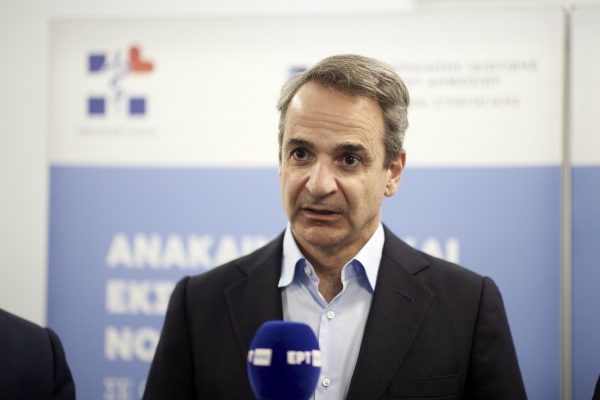
Greek PM Mitsotakis Says Fight Against Inflation Ongoing
The Premier made statement during a visit an an open vegetable market

Unpaid Taxes in Greece Reach 1.539bln Euros
As the figures revealed the number of debtors totaled 3,878,712 individuals and legal entities.

ELSTAT: Greek Primary Surplus Reaches 1.9% of GDP in 2023
Greek debt saw a slight dip to 356.7 billion euros by the end of 2023, down from 356.8 billion euros a year prior
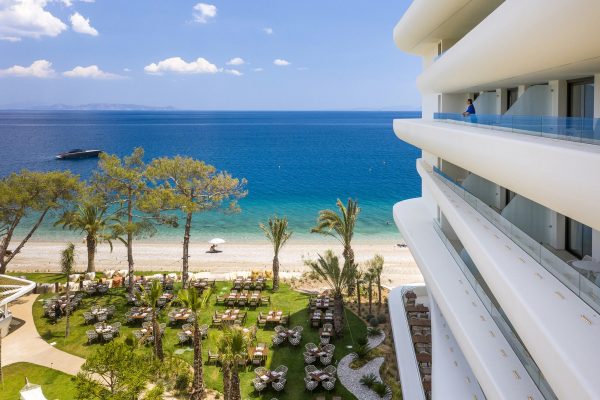
Study: Greece in Top 5 Hotel Investments in Europe
As previously reported by OT, more than 60 hotel projects are set to be developed in Greece over the next four years
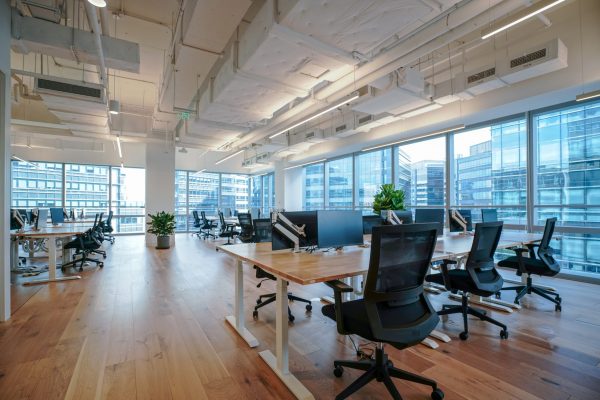
GEOAXIS Report: Office Rents Surge by 40% in Ten-Year Span
Geoaxis estimates that the different dynamics in the office market will continue into 2024/2025, predicting stability for older offices, increased demand for renovated spaces, and a slowdown in the rise of rents for modern, green offices

Greece: ‘Godparents’ Basket’ Debuts Today
As part of the program, Greek retailers are obliged to identify the lowest prices of certain categories of products traditionally purchased as Easter gifts by godparents for their godchildren between April 22 until May 4

Brain Waste in Greece: 22.74% of Migrants Overqualified for Jobs
Almost half of all college-educated migrants in Europe are overqualified for their jobs and twice as likely as natives to be unemployed, according to Lighthouse Reports
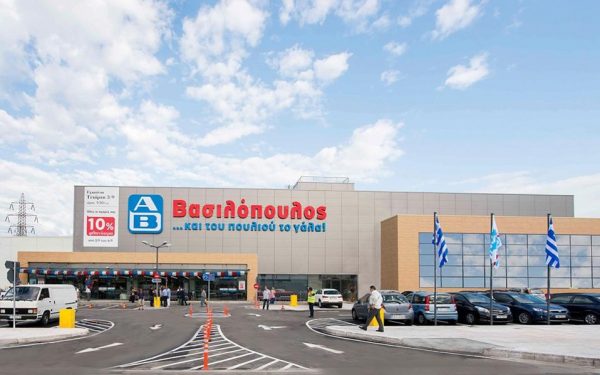
AB Vassilopoulos Supermarket Vies for 2nd Place in Greek Market
AB Vassilopoulos hopes its focus on its private label, addition of 2-3 company supermarkets and another 50 franchises will help it surpass LIDL

Greek Youth Struggle Amidst Low Wages and Soaring Expenses
Furthermore, 52.7% of respondents attribute Greece's current significant issues to governmental failure, while another 49.1% anticipate continued economic hardship in the nation's future

S&P Raises Greece Outlook to ‘Positive’; Rating Unchanged
The same international ratings agency in October 2023 raised the country’s creditworthiness to BBB- with a stable outlook



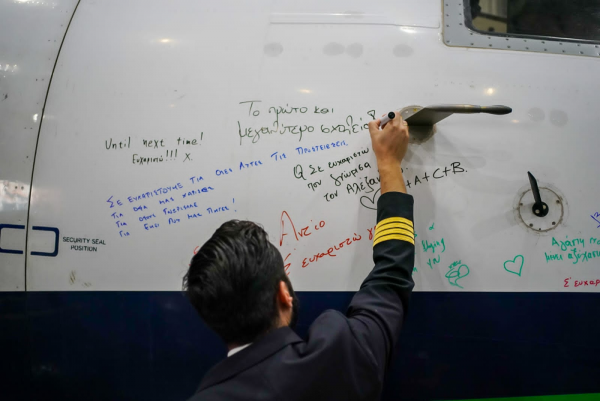



![Φυσικό αέριο: Γιατί είναι δύσκολη η απεξάρτηση από τη Ρωσία – Τα εμπόδια [Χάρτης]](https://www.ot.gr/wp-content/uploads/2022/07/gas-1-1-90x90.jpg)














![Αυτοκινητόδρομος Ε65: Στην κυκλοφορία σήμερα και τα 136 χλμ. Λαμίας – Τρικάλων [χάρτης]](https://www.ot.gr/wp-content/uploads/2024/04/1-5-90x90.jpg)







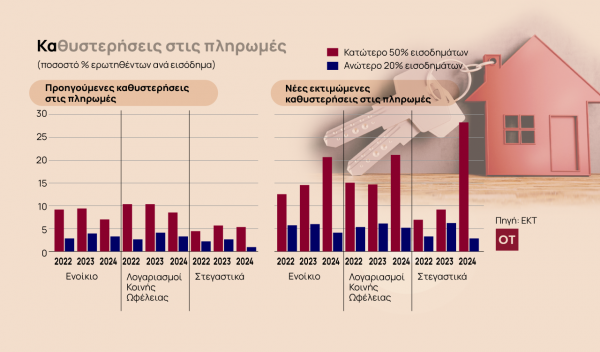
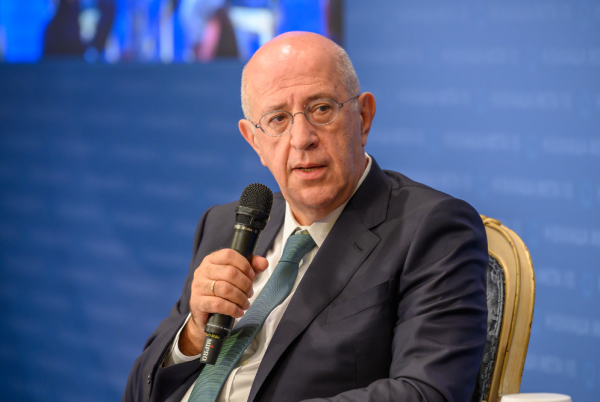






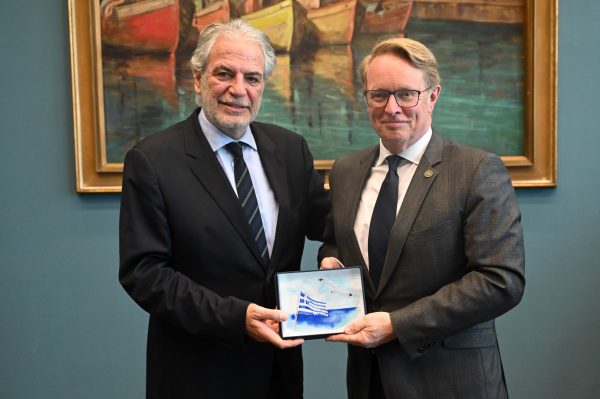


![Αυτοκινητόδρομος Ε65: Στην κυκλοφορία σήμερα και τα 136 χλμ. Λαμίας – Τρικάλων [χάρτης]](https://www.ot.gr/wp-content/uploads/2024/04/1-5-600x338.jpg)



 Αριθμός Πιστοποίησης Μ.Η.Τ.232433
Αριθμός Πιστοποίησης Μ.Η.Τ.232433